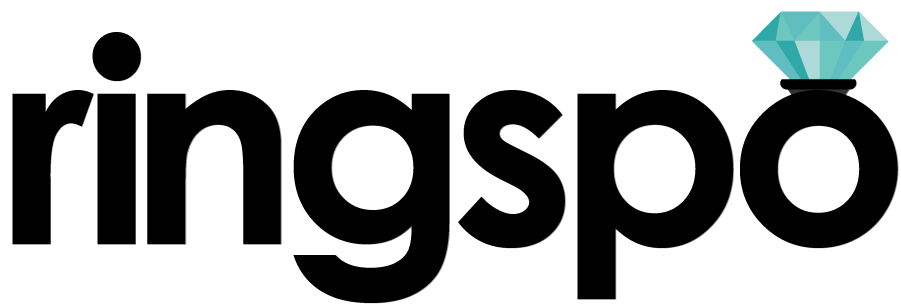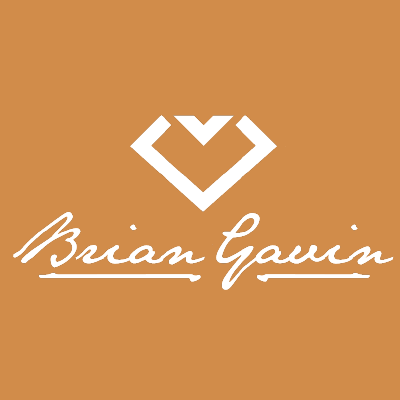Brian Gavin Diamonds Review
The highest quality diamond engagement rings. Period.
Ringspo is reader supported
Ringspo is reader-supported, which means we may receive a commission if you click a link to a retailer & subsequently make a purchase.
We feature links to several retailers to help readers find the one that is the best fit for them. Find out more about how Ringspo works here.
Brian Gavin as a company may not be one that you are immediately familiar with compared to big jewelry brand names like Tiffany’s or Blue Nile, but in the world of diamonds, Brian Gavin the man stands tall like a towering bearded colossus.

Brian Gavin is a fifth-generation diamond cutter, originally from South Africa but now based out of Houston. For generations his family has cut and polished diamonds to the highest grade, continually innovating and introducing new cuts and techniques to get diamonds to sparkle more than brilliantly than ever.

Brian himself is well known in the diamond world for championing ‘hearts and arrows’ in round brilliant diamonds and for developing specifications for a cushion cut hearts and arrows diamond in 2004.
Brian Gavin Diamonds was formed in 2009 when Brian Gavin left his previous role at Whiteflash, another of my recommended retailers. In his time at Whiteflash, Brian Gavin helped them create the ‘A CUT ABOVE’ signature of diamonds, which are among the very best cut diamonds in the world. When he set up on his own, Brian has retained his exacting requirements and has developed several signature lines of his own.
As with all of my retailer reviews, I’ll look at Brian Gavin Diamonds under the following sections:
- Diamond Selection
- Ring Setting Selection
- Website Design and ease of use
- Customer Service
Diamond Selection
Unlike many other online diamond and engagement ring retailers, Brian Gavin doesn’t just rely on a ‘virtual inventory’, where the diamonds are held in warehouses owned by other companies, or even in other countries.
Brian Gavin does offer virtual inventory diamonds – around 60,000 at last count – but more interesting are the higher quality ‘Brian Gavin Signature’ diamonds. Each of these signature diamonds are handpicked and physically held by Brian Gavin and it’s these stones that really sets Brian Gavin apart from most other engagement ring retailers on the web.
There are several different grades of signature diamonds on offer at Brian Gavin:
- Round Hearts and Arrows
- Cushion Hearts and Arrows
- Princess Cut
- Brian Gavin Blue
- Brian Gavin Cape
- Brian Gavin Princess
- We do big rocks (2ct+)
That’s a lot of signature lines and I’m not going to bore you with a review of each and every one. Instead, in this review I’m going to look at three of Brian Gavin’s signature diamond lines examining one example of a stone from each.
Looking at three should be enough to give you a good idea of the quality of stones across all of Brian Gavin’s signature lines, but if you have any questions about any of the other lines, please don’t hesitate to drop me an email.
Click below to open up each review section. This does go into some detail about the thinking behind each of the signature lines, but if you are looking for the highest quality diamond possible or are already considering a Brian Gavin signature line, then it’s worth taking the time to read.
Round Signature Hearts And Arrows
Hearts and arrows are a signifier of the very highest symmetry grade possible in a diamond. To achieve it, the sides of the daimond (known as facets) and angles between them must be cut extremely precisely and there is very little margin for error.
As a result, achieving perfect Hearts and Arrows is difficult and rare, and diamonds which do display it are highly prized. Brian Gavin’s signature diamonds are hand-picked to exhibit this characteristic and are generally cut to higher specifications than most other retailers ‘signature cuts’.
To test the Brian Gavin signature cut, I chose to examine the least expensive stone that fit my standard test criteria for 4Cs:
- Carat: 1
- Clarity: VS2
- Colour: H
- Cut: BG Signature Ideal
Holloway Cut Adviser
The first test I conducted on the diamond was using the Holloway Cut Adviser tool (HCA). The HCA takes into account the key angles and proportions of a diamond and how they will work together to reflect light to give a prediction of how brilliantly a diamond will sparkle.
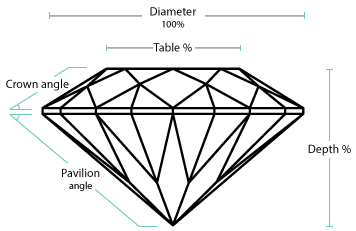
The proportions that it looks at are:
- Table %
- Depth %
- Crown Angle
- Pavilion Angle
Each diamond is scored on the following scale: 0 – 2: Excellent, 2 – 4: Very Good, 4 – 6: Good, 6 – 8: Fair and 8 – 10: Poor. As a general rule, you should never consider a diamond that scores more than 2 on the HCA.
Looking at the results on the right for the Brian Gavin Signature diamond, we can see that it gets an overall score of 1.5 and scores ‘Excellent’ in each of the three categories that relate to ‘light performance’ – light return, fire and scintillation.
Test diamond’s HCA results:
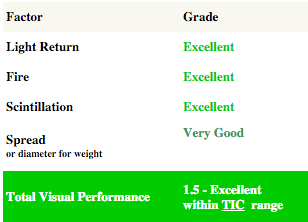
This is a good result and confirms that the diamond isn’t a dud.. Phew! But it’s also to be expected from a stone that has been graded as ‘ideal’ by the strictest diamond grading lab, the AGS.
If it had scored over 2.0 on the HCA (which would have been a big surprise) then I would have recommended that this diamond was not worthy of consideration.
To really ascertain the quality of the diamond, we need to look at the other images that Brian Gavin supplies.
ASET image
ASET stands for ‘Angular Spectrum Evaluation Tool’ and although that sounds complicated, it’s basically a viewer which shows how much light leaks from a diamond and how much will be bounced back to the viewer in the form of brilliant sparkle.
It’s the best tool to determine how much a diamond is actually going to sparkle, and if you want a detailed intro to ASET and how to read the images, you can check out this blog. However, a quick guide to interpreting ASET images is:
- Red: the most intense light – as much red as possible is good.
- Blue: shows the contrast pattern of the diamond – this should be as symmetrical as possible.
- Green: light reflected at an angle, which gives low intensity. Some green is inevitable, but we want to reduce this as much s possible.
- Black: light leakage. We want to reduce this as much as possible. (Sometimes the light leakage shows as white)
Here’s a couple of example ASET images to show what good and bad ASET images look like:
Well-cut diamond:
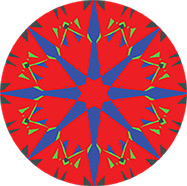
Majority is red (indicating light getting reflected) with small areas of low-intensity green and a distinct pattern of blue. The blue pattern resembles arrows, an indication of the symmetry of the diamond.
Poorly-cut diamond:
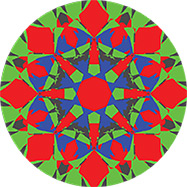
Although there is some red, the majority of the light is low intensity green and the dark areas show where light is being lost entirely. This diamond would appear dull and lifeless.
Our Brian Gavin Diamond’s ASET results:
We selected the least expensive Brian Gavin Signature hearts and arrows diamond, and when we examine its ASET image on the right, we can see that the light that is returned is very similar in pattern to the ideal image, shown above.
The pattern of green (low-intensity) light is very similar and although there are some small areas of black (indicating lost light), this is well within the accepted amount.
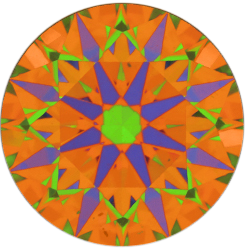
One big difference is that the Brian Gavin diamond has green over the center of the diamond, while the example has red in the center.
This is actually a quirk of the way that the ASET image: sometimes the center appears red and sometimes appears green, depending on the angles of the diamond. It isn’t an indicator that the diamond has low light intensity.
Idealscope Image
Similar to ASET images, Idealscope images are used to highlight areas of light leakage, but are also used to show the ‘hearts and arrows’ and judge a diamond’s level of symmetry.
Example Idealscope images:
Hearts:
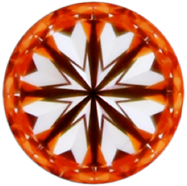
This image is taken looking at the bottom of the diamond (known as the ‘pavilion’). You can see that there’s excellent symmetry throughout: the hearts are the same size as each other and the gap between each heart and the V-shape underneath them is distinct (they shouldn’t touch) and identical.
Arrows:
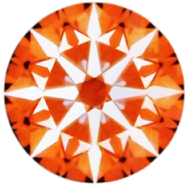
This image is taken looking at the top of the diamond. Each arrow head and the shaft should be perfectly aligned and the size of the arrow shafts and pointed tips should be uniform.
Our Brian Gavin Diamond’s Hearts:
Looking at our Brian Gavin diamond, we can see that eight hearts are all very equal, with squared off shoulders, which is what we are looking for.
One area that the diamond diverges from a perfect hearts and arrows is that the V shapes in front of the hearts aren’t all identically sizes and some of them are not perfectly identical.
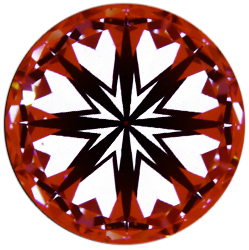
In my opinion, this does stop this diamond from being a 100% perfect ‘Hearts and Arrows’ diamond. However, it is so close to being perfect that only close examination at magnification through an Idealscope viewer by someone who knows what they are looking for would show this.
Our Brian Gavin Diamond’s Arrows:
Looking at the arrows on the Brian Gavin Signature Ideal diamond, we can see that the arrows are all evenly sized and symmetrically spaced. The dark triangles between the arrow heads are very similar in size and spaced regularly and evenly.
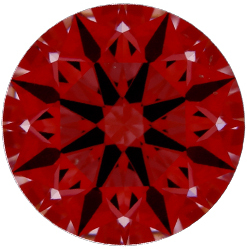
One area of small discrepancy is in the alignment of the shafts and arrow heads. Some of the arrow heads e.g. at 5 o’clock are not quite aligned perfectly with the shaft of the arrow. This is a minor deviation though and on the whole this is very close to being perfect arrows.
In conclusion
There’s no doubt that Brian Gavin’s Signature Ideal Diamonds are a premium product – they are among the very highest quality diamonds available anywhere in the world and as a result carry a premium price tag over other regular diamonds at the same carat weight and color.
The aim of this section was to answer the question of whether Brian Gavin’s Signature Ideal Hearts and Arrows line of diamonds is worth the price premium over other diamonds which have been graded as ‘Excellent’ or ‘Ideal’.
We chose the least expensive diamond that met our standard carat, color and clarity reviewing criteria to see whether the ‘worst’ diamond in the Signature Ideal range would perform well.
On all the tests – Holloway Cut Adviser, ASET and Idealscope image, the diamond did indeed perform extremely well. However, it was not quite 100% perfect on either hearts and arrows. If you’re paying a premium, should you be able to expect perfection? In my opinion, yes.
Luckily, perfection is available. Looking at other diamonds within the range, there are stones which do return absolutely perfect hearts and arrows (see below), although they are higher priced.
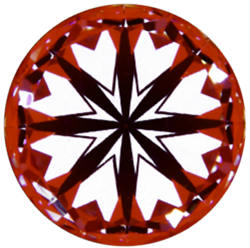
So, to answer the question as to whether Brian Gavin Signature Hearts and Arrows are worth the premium I would say that yes, they are. Brian Gavin starts with the highest cut grade – Ideal – from the most discerning Diamond grading laboratory – AGS – and then applies their own criteria meaning that they are among the most carefully crafted and rarest diamonds in the world.
One thing to note though is that even within the range there are degrees of perfection. If you are purchasing a diamond for its ‘hearts and arrows’ properties and want it to be 100% perfect, that you should ensure that you review the Idealscope image carefully and ensure that it is indeed perfect hearts and arrows, rather than just close to it.
However, any diamond from the range is higher in cut quality than 99.9% of all diamonds available on the market today and well worthy of purchase.
Brian Gavin Blue
Diamond fluorescence is a property that occurs due to tiny amounts of the chemical boron in a diamond, which are present from when the diamond was formed millions of years ago.
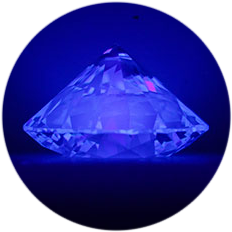
When this boron is exposed to strong UV light, either in sunlight or under UV lamps, about a third of diamonds show a glowing effect which is known as ‘fluorescence’.
For the vast majority of diamonds, this fluorescence is completely invisible in day to day wear. For diamonds with strong fluorescence where some effect is visible though, there are two ways that it can affect a diamond
- For colors of diamond that are warmer ie. from I – M the fluorescence can actually make the diamond appear whiter than it really is. This is a good thing!
- For very white diamonds – those graded D or E on the color scale – very strong fluorescence can make a diamond appear slightly milky, which is not so good.
However, this needs to be judged on a diamond by diamond basis.
Fluorescence in general gets a bad rap from most jewelers even though it can either have a minimal effect on the color of a diamond, or even a slightly positive one. As a result, prices for diamonds with strong fluorescence are lower than diamonds without it, and the usual advice when buying a diamond online is to avoid any diamond with strong fluorescence, just in case it gives the milky effect.
Brian Gavin’s Blue range aims to change this.
The Blue range are all diamonds with strong blue fluorescence which Brian Gavin has handpicked and verified that no milky effect is present. This is pretty genius – customer can benefit from the low prices that the strong fluorescence carries but Brian Gavin has taken the element of risk away.
All of the diamonds in Brian Gavin’s Blue range are graded with an ‘Ideal’ cut grade from the toughest diamond grading lab – the AGS – which means that they should sparkle brilliantly.
To test Brian Gavin Blue diamonds I chose the least expensive diamond which met my standard stats:
- Carat: 1
- Clarity: VS2
- Colour: H
Holloway Cut Adviser
As with the signature ideal stone review above, the Brian Gavin Blue diamond scores excellently in the Holloway Cut Adviser.
Test diamond’s HCA results:
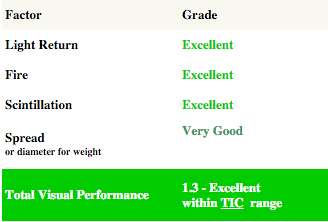
It confirms that the diamond will return a high proportion of the light back to an observer’s eyes and it performs better than a high proportion of stones graded ‘Excellent’ by GIA.
Again, this is a good result but we can also use the other images provided by Brian Gavin to ascertain whether this is a top quality stone, or just a very good one.
ASET
As with the previous diamond, we’ll examine the ASET image with the following criteria in mind:
- Red: the most intense light – as much red as possible is good.
- Blue: shows the contrast pattern of the diamond – this should be as symmetrical as possible.
- Green: light reflected at an angle, which gives low intensity. Some green is inevitable, but we want to reduce this as much s possible.
- Black: light leakage. We want to reduce this as much as possible. (Sometimes the light leakage shows as white in ASET images)
Looking at our test diamond below, we can see that this diamond performs incredibly well. The areas of low-intensity green light are exactly where we want to see them and are as minimal as you could ever hope for. The areas of very dark light leakages are reduced to triangles between the arrows, and again this is exactly where we would expect to see it on a well-cut diamond and the triangles are regularly positioned and spaced.

The blue areas show us the ‘arrows’ of the diamond and we can see that they are extremely symmetrical, with even-shaped and sized shafts and heads. In an absolutely perfect Hearts and Arrows stone, the heads and shafts would each have a solid connection and we can see that with this stone this is not always the case.
We selected the least expensive Brian Gavin Signature hearts and arrows diamond, and when we examine its ASET image below, we can see that the light that is returned is very similar in pattern to the ideal image, shown above.

The pattern of green (low-intensity) light is very similar and although there are some small areas of black (indicating lost light), this is well within the accepted amount.
One big difference is that the Brian Gavin diamond has green over the center of the diamond, while the example has red in the center.
This is actually a quirk of the way that the ASET image: sometimes the center appears red and sometimes appears green, depending on the angles of the diamond. It isn’t an indicator that the diamond has low light intensity.
So, although we aren’t seeing 100% perfect arrows here, it is still a 95% perfect arrows and this discrepancy would make no visible difference to the brilliance of the stone.
One thing that it would be good to have available to review is an image of the ‘hearts’, but this wasn’t available on the diamond detail page. However, as these stones are all physically held by Brian Gavin, they can supply the hearts image for any ‘Blue’ stone when requested.
Fluorescence image
Brian Gavin also include a fluorescence image, to show what each Brian Gavin Blue diamond looks like when exposed to UV light.
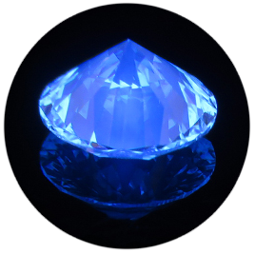
This shows us the level of intensity of the fluorescence as ‘strong blue’, which is also listed on the grading certificate.
Again, usually a ‘strong blue’ diamond should be avoided at all costs as it can give a diamond a milky appearance, but by including it in their ‘Blue’ signature line, Brian Gavin are vouching for the quality of this stone and that there are no adverse effects as a result of the fluorescence.
Conclusion
On the Holloway Cut Adviser and in analysis of the ASET image, the Brian Gavin Blue diamond performs just as well as the ‘Signature Ideal’ diamond reviewed above. It is an AGS Ideal cut diamond, which has been hand-picked for its symmetry and adherence to Brian Gavin’s preferred cut angles.
At 1.142 carats, this stone is 0.137 carats larger than the 1.005 carat Signature Ideal that we looked at above. It’s also $878 less expensive. Brian Gavin are vouching that there are no adverse effects of the fluoresncence on the diamond and no-one would ever know that the diamond has blue fluorescence unless it was exposed to UV light.
Brian Gavin’s ‘Blue’ range is a great way to get the very highest cut quality diamond possible at a reduced price. Check out the current range here.
‘We Do Big Rocks’ review
When a diamond is shaped from the rough stone, diamond cutters often need to make the choice: should they maximise the cut quality and cut the stone to be a little smaller than it potentially could be? Or, should they maximise the carat weight and lose some of the cut quality and therefore the amount that it will sparkle.
Unfortunately, maximizing the carat weight often wins out. This means that high carat stones are often lower cut grades and large, well-cut diamonds are rare.
Brian Gavin’s ‘We Do Big Rocks’ range offers large diamonds at AGS ideal cut grade – the highest cut grade possible – at carat weights larger than 2 carats.
To test the ‘We Do Big Rocks’ range, I’ve chosen a diamond that fits my normal recommended characteristics for color and clarity:
- Size: 2 carat
- Color: H
- Clarity: VS2
- Cut: AGS Ideal
At $27,998, this is definitely not an inexpensive stone, but it’s also a stone that has been chosen with no compromises in terms of clarity or colour.
If you are willing to make a compromise on colour or clarity then you can get a similar sized stone with equally good cut at around half the price e.g. this 2.25 carat stone with color M at $13,998.
Holloway Cut Adviser
Again, we’ll start off with a look at the stone through the Holloway Cut Adviser and again we can see that the diamond performs extremely well with ‘excellent’ results for the three characteristics that contribute to the beauty of the diamond – light return, fire and scintillation.
Test diamond’s HCA results:
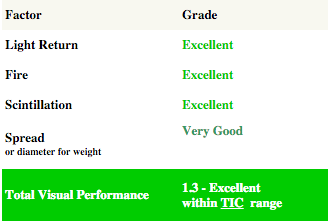
But again, as this is a AGS Ideal diamond, this should be expected.
What should be highlighted again though, is that a diamond of 2 carats and above being cut well enough to perform at this level is unusual. Most stones that are 2 carats and above have been cut to maximise carat weight, rather than cut quality, so won’t sparkle nearly as brilliantly as this one.
ASET
The ASET image for this stone is probably the best out of any of the stones that I have examined in this review.
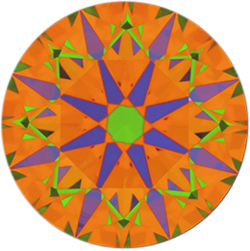
The diamond is returning a huge amount of maximum-intensity red light and the blue and green light is very regular.
Idealscope
The top down Idealscope image (arrows) shows that the arrows are all extremely well-proportioned and even. Cutting a stone this perfectly is extremely difficult and at a stone this size, it’s extremely rare.
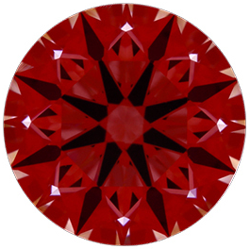
Looking at the diamond from the bottom (the ‘pavilion’) shows us the hearts. The hearts are all extremely symmetrical and evenly-sized, with even-spacing between the hearts and the V-shapes in front of them. Each of the hearts has squared-off points at the top, which is what we’re looking for too.
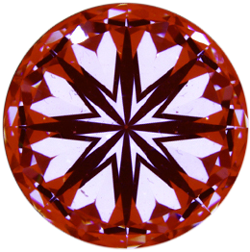
One area where the hearts don’t appear perfect is the ‘cleft’ that appears between the two lobes of each of them, which results from a longer than ideal lower girdle.
This wouldn’t make any visible difference to the visible beauty of the diamond when viewed in natural light, but does stop it from being an absolutely perfect hearts and arrows diamond.
Conclusion
As I’ve mentioned, large, well-cut diamonds are rare and large well-cut diamonds with good color, clarity and absolutely perfect hearts and arrows are as rare as a “good hair day” for Donald Trump.
The diamond reviewed comes very close to being a perfect hearts and arrows diamond, but misses out on a small issue – the clefts between some of the hearts. This detail is so minor that unless you a obsessively seeking an absolutely perfect hearts and arrow diamond, it really doesn’t matter.
Each diamond does need to be investigated on its individual merits, but my analysis of the least expensive stone which meets my normal recommended criteria of colour and clarity shows that Brian Gavin’s ‘We do big rocks’ range again offers stones of the very highest cut quality available.
Brian Gavin ‘Advanced Selection’
The Advanced Selection gives you the opportunity to buy diamonds before they have even been cut.
To be honest, if you’re looking for a diamond for an engagement ring, this is probably a service you don’t need. It’s much easier and more straightforward to choose from the diamonds that have already been cut and area ready to be mounted into your ring. That way you know what you’re getting and can choose between the options that are already there.
‘Virtual selection’
As well as its signature lines, Brian Gavin goes also offer access to around 20,000 diamonds of all sizes and qualities in a ‘virtual inventory’ ie. held by suppliers, rather than on Brian Gavin premises.
As the diamonds aren’t held by Brian Gavin, there are no images of the individual stones available and no ASET or Idealscope images. This is common for most websites when looking at virtual inventory diamonds and it means that the only way to differentiate stones is through the statistics on the grading certificate.
Finding a diamond that sparkles briliantle in a virtual inventory is still definitely possible though and Brian Gavin’s virtual inventory stones are extremely competitively priced. If you’d like some help finding the best stone for your budget from Brian Gavin’s virtual inventory then just drop me a line.
Ring Settings
Brian Gavin offers a wide range of engagement ring style, produced in one of two ways:
- Pre-made ring settings from ring suppliers. These rings are usually less expensive, but as Brian Gavin is a premium retailer, they don’t compromise on compromise on quality or finish.
- Custom-crafted in a workshop on their premises
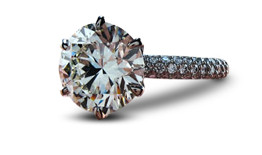
Pre-made
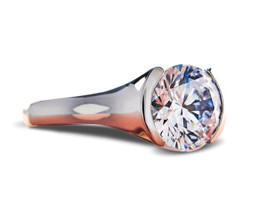
As well as the usual selection of ring setting styles found at most jewelers (solitaire, halo, three stone etc) in white gold, yellow gold, platinum and palladium, Brian Gavin also offers a wider variety of more unusual pre-made designs like the half-bezel shown on the left.
Pricing can be a little higher than other online jewelers,for comparable ring settings, but that’s because of Brian Gavin’s focus on quality in everything they provide.
If you’re looking for a ring setting that is a bit more unique then check out Brian Gavin’s gallery to see whether there’s anything that tickles your fancy.
Custom Rings
If you have an idea for what you’re looking for but can’t find the exact ring that you want, or if you’ve seen a ring that has inspired you, then Brian Gavin also has a full custom service.
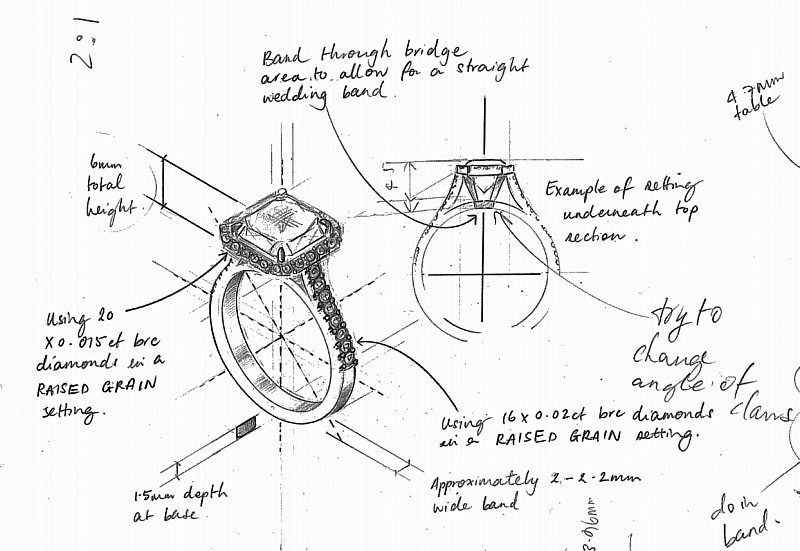
Buyers work with a designer to develop their ring from an initial sketch, to a CAD model, to a 3D printed wax model until the ring is finally cast in metal once the design is signed off.
Pricing is a little higher than the ‘off the shelf’ rings, but it’s still very competitive compared to high-end ‘designer’ jewelers where you are usually paying for the brand name rather than the quality of the workmanship.
One thing to note is that all custom work is final and non refundable. However, as it’s a collaborative process and you’re involved all the way, you should be able to ensure that the end result is exactly what you’re looking for.
Website
When you first fire up the Brian Gavin website, it looks a little different to most other high end e-commerce sites.
While most websites stick to a tried-and-tested white background and lots of space to allow the products to do the talking, the Brian Gavin site’s dark background and liberal use of their corporate orange takes a little bit of getting used to.
Navigating around the website can also be a little challenging, but there are a couple of tips below to help and if you’re looking for a top quality diamond then it’s well worth persevering with.
Finding your diamond
Using the Brian Gavin Diamond search can be a little bit confusing due to the many different classifications of diamonds that are available. If you know exactly what you’re looking for though, this is actually great.
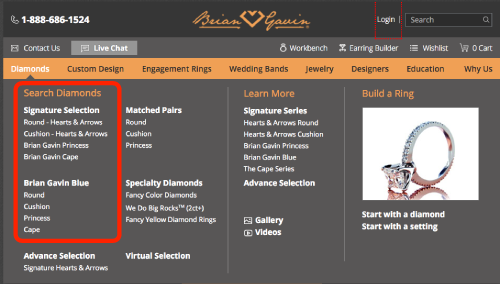
For example, if you know that you want a cushion cut diamond from the ‘Blue’ range, you can click straight through from the navigation bar and see just these diamonds without the need to wage through filters in the ordinary search tool.
But, if you’re just browsing to see what Brian Gavin can offer, the search choices can seem a little overwhelming. I recommend starting with the first option(Round – Hearts & Arrows) and then using the options within the search tool to refine your search
Using the search tool
When looking at the search tool, one important thing to note is that the ‘Lab cut grade’ is hidden in the Advanced Options. If you conduct a search without including this as one of your search parameters, you’ll end up with all cut grades included, including ‘good’, which aren’t actually very good at all.
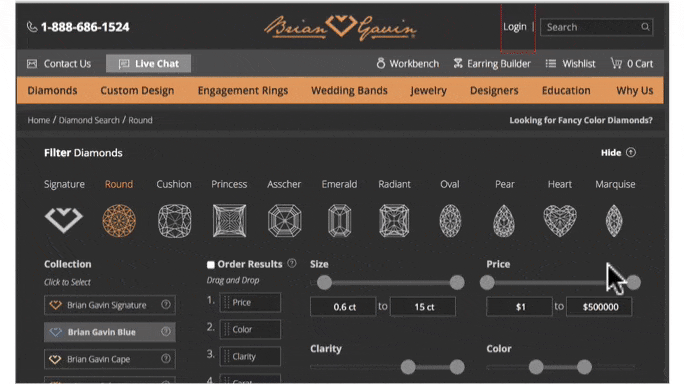
To access, scroll down slightly and click the ‘Expand’ button on the right, and then ‘Lab Cut Grade’ is in the first column of option.
Toggling diamond types
Another thing to note is that the search is broken down by type of diamond, with each Brian Gavin signature line given its own button on the left of the search menu.
You can use these to trigger the selection of the diamonds either on or off, which is a little clunky but does mean that you can ensure that you only see the diamonds that you want in your search results.
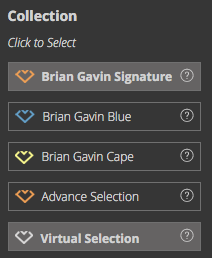
Keep an eye out for the colored logos on the left of each search result, which is an indicator of which signature line the diamond belongs to.
Stick with it
Compared to its competitors, searching for your perfect stone on Brian Gavin’s website can be a more confusing and time-consuming process, mainly because of the variety of signature lines that are on offer and the way that they separate their ‘virtual’ inventory from the diamonds that they hold in-house.
The last point on the Brian Gavin search is that it can be quite slow to return results and which can make finding your perfect stone a little more time consuming. But, getting the right stone is definitely worth a little wait and persevering with the search can definitely pay dividends as they offer stones of unparalleled quality.
Service
Pre-purchase
Many online jewelers offer ‘live chat’ to answer customer questions, but the difference with Brian Gavin is that you may well end up speaking to the big man himself. This personal touch is what really sets Brian Gavin apart from its larger competitors – they’re large enough to offer a huge choice of diamonds, but small enough that you can get personal service from one of the most respected figures in the world of diamonds.
I’ve contacted them several times to ask for more information on individual diamonds while researching and have always found the answers to be scrupulously honest – they want to ensure that you get the diamond that is right for you.
Purchase
Brian Gavin accepts most payment methods (Visa, Mastercard, American Express, Discover, PayPal and Bank Wire Transfer. You can also pay with a personal check or a money order, but this will hold up the processing of your order for 10 business days while the check/money order clears, so if you’re in a hurry to receive your ring then I’d avoid this.
A big plus is the discount available if paying by bank wire, check or money order – 1% discount for most diamonds, but a huge 3% discount for Brian Gavin Signature Hearts and Arrows and Blue.
If you’re buying from outside the US, payment is only accepted by bank wire transfer. I’d like to see them change this policy in the future as organising an international wire transfer is an added hassle an expense.
Brian Gavin also offers 3 – 12 months financing. The rates aren’t published on their website as they will be dependant on your individual credit score, but it’s always my very strong recommendation to not finance your engagement ring.
Once you’re engaged you will be starting to plan your wedding and those things are expensive! You want to make sure that you are planning and looking towards the wedding rather than worrying about making repayments on your engagement ring.
When you do purchase, you receive your ring in a branded Brian Gavin Diamonds ring box. It’s nicely presented, but does feature their corporate orange quite heavily.
Post-purchase
As with all of my recommended retailers, every engagement ring from Brian Gavin carries a lifetime warranty against manufacturing defects, under normal wear and tear. If a ring has been worked on by a third party jeweller in the past e.g. if it has been resized by someone other than Brian Gavin, then the lifetime warranty is not valid. However, Brian Gavin will still repaid the jewelry, but this may be at a cost to you.
Brian Gavin Diamonds offers a 15 day inspection period on all diamonds and jewelry, starting from the the day that you receive the package. Many competitors offer a 30 day return period on diamonds, so this is where Brian Gavin’s service level does dip compared to competitors. However, if you are confident about what you are purchasing, then this hopefully shouldn’t be an issue.
Brian Gavin Diamonds Rating
Brian Gavin has carved out its niche as the online store that offers the highest quality diamonds available. If that’s what you’re looking for, then Brian Gavin is where to find it. Their range of signature cuts make it easy to zero in on the exact type of high-quality stone that you’re looking for.
The areas that Brian falls down a little compared to its competitors – their website and the returns policy – can be put down to the fact that it is a much smaller organisation than Blue Nile or James Allen, so doesn’t have as many resources to put behind them.
If you’re looking for the highest quality diamond you can find with a range of well made ring settings then I can recommend Brian Gavin with no hestiation. The Brian Gavin Blue range in particular is a great way to get an incredibly high quality diamond at a great price. Click through and check out Brian Gavin below.

